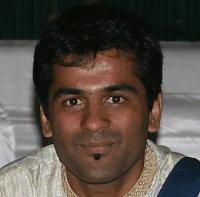16 Jan Brain-Based Signatures May Help Optimize Anesthesia Dose

Dr. Srivas Chennu
More on Anesthesiology on MedicalResearch.com
MedicalResearch.com Interview with:
Srivas Chennu, PhD
Senior Research Associate
Clinical Neurosciences, University of Cambridge
Visiting Scientist, MRC Cognition and Brain Sciences Unit
College Research Associate, Homerton College
Medical Research: What is the background for this study?
Dr. Chennu: Scientific understanding of how brain networks generate consciousness has seen rapid advances in recent years, but the application of this knowledge to accurately track transitions to unconsciousness during general anaesthesia has proven difficult. Crucially, one reason for this is the considerable individual variability in susceptibility to anaesthetic dosage.
To better understand the factors underlying this variability, we measured interconnected, oscillatory brain activity (‘brain networks’), using non-invasive, high-density electroencephalography (EEG) from healthy volunteers while they were sedated with the common anaesthetic propofol. Alongside, we measured their behavioural responsiveness, and the actual concentration of the drug in their blood plasma.
Medical Research: What are the main findings?
Dr. Chennu: We found that the strength of their brain network activity was linked to their behavioural responsiveness. Further, the strength of these networks before sedation predicted why some participants lost consciousness while others did not, despite registering similar levels of drug in their blood. In addition, a different measure of brain connectivity separately closely correlated with the actual level of drug in their blood.
Medical Research: What should clinicians and patients take away from your report?
Dr. Chennu: We were able to dissociate behavioural responsiveness from drug exposure using brain-based signatures estimated using non-invasive electroencephalography. Further, we were able to use these signatures measured at baseline before administering the drug, to explain the consequent individual variability in response to the drug. Our findings highlight novel markers that prognosticate individual differences in susceptibility to propofol and track drug exposure. These advances could inform accurate drug titration and brain state monitoring during general anaesthesia.
Medical Research: What recommendations do you have for future research as a result of this study?
Dr. Chennu: The findings of this study need to be replicated in the larger clinical context.
EEG systems are commonplace in hospitals and relatively inexpensive. Further engineering and testing could help advance and adapt current technology to help doctors optimise the amount of drug an individual needs to receive to become unconscious without increasing their risk of complications.
Citation:
Srivas Chennu, Stuart O’Connor, Ram Adapa, David K. Menon, Tristan A. Bekinschtein. Brain Connectivity Dissociates Responsiveness from Drug Exposure during Propofol-Induced Transitions of Consciousness. PLOS Computational Biology, 2016; 12 (1): e1004669 DOI: 10.1371/journal.pcbi.1004669
[wysija_form id=”5″]
More on Anesthesiology on MedicalResearch.com
Srivas Chennu, PhD (2016). Brain-Based Signatures May Help Optimize Anesthesia Dose
Last Updated on January 16, 2016 by Marie Benz MD FAAD
